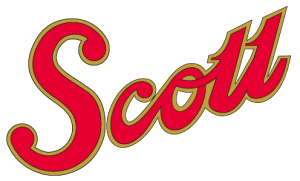



A 3¾ h.p. Scott to which is fitted a quick firing gun made by the Coventry Ordnance Works and weighing 16 lb.
FURTHER OFFICIAL RECOGNITION OF THE MOTOR CYCLE.
EVERY DIVISION OF THE ARMY TO HAVE ITS SIDECAR MACHINE GUNS.
A MACHINE gun mounted on a motor cycle is no new thing - one was shown attached to a Scott bicycle at the Olympia Show two years ago - but its merits are now being recognised more than ever before. Batteries are being formed, consisting of sixty-four non-commissioned officers and men, who will be equipped with quick-firing guns mounted on Scott and Enfield sidecar machines. Every division of the Army is to have one of these motor machine gun batteries.
The Times of November 24th contained some interesting notes on the employment of motor cycle machine guns. The writer states that he learnt some interesting details from an officer of the motor section. "In the opinion of my informant," he says, "the bicycle is superior in general utility to the car. A powerful armoured car fitted with a long range gun is seriously handicapped by its very qualities. To carry a weapon of calibre commensurate with its size, the car must be fast and powerful, and therefore bulky. It is undesirably visible, and it is unwieldy for the simple reason that, in the roads of Flanders, it takes a very appreciable time to turn round." . . .
Advantages of the Mobile Motor Cycle.
"The motor bicycle, armed with a small quick-firing gun, such as is extensively used by the enemy, is a weapon of apparently much greater possibilities. It is very small, approaches invisibility as nearly as can be, and, taking advantage of the trees lining every road, can make long surprise rushes, deliver its attack, and return in safety." . .
"A clever rider (and marksman) can do an immense amount of damage in a few minutes with one of these machines. As soon as he reaches his point of attack, he dismounts and tilts the machine slightly to the left, bringing the quick-firing gun into proper position for manipulation. A good man can sweep a patrol or a transport convoy, and be mounted and on his way back again at 50 m.p.h., almost before the attacked party are aware of his existence."
The writer concludes as follows: "Great Britain builds the best motor bicycles in the world, and numbers most of the best riders. A well-trained corps of experienced men, taught to handle a light machine gun, might well prove an invaluable addition to our arms."
The New Motor Cycle and Sidecar Battery.
Such a corps, as we have said, is now in training at Bisley, but the guns will not be mounted on motor bicycles as The Times writer appears to imagine, but on the chassis of sidecars attached to motor cycles. One man will look after the gun and fire it either from the sidecar or quickly dismount the tripod and gun and convey them over ploughed fields or such like should necessity arise. The batteries will be attached to the Royal Horse Artillery and Royal Field Artillery, the pay being the same as in these units. A quick-firing gun on the handle-bar of a bicycle would be a very unstable arrangement, and render steering difficult, especially on greasy and damaged roads. The sidecar is almost, if not quite, as mobile and as easily turned in a narrow roadway; the gun would be ready at a moment's notice without any preparation, and a much greater quantity of ammunition could be carried.
Some Particulars of the Machines.
A large number of Scott and Enfield sidecars, to which the quick-firing guns are attached, are now being delivered. Their design is well-known to our readers. The principal features are as follow : Both machines are fitted with chain drive, two-speed gears, and twin-cylinder engines, the Scott engine being a two-stroke of 532 c.c.; the Enfield is fitted with a 6 h.p. J.A.P. 770 c.c. engine. That both are well-tried and reliable machines goes without saying, otherwise they would not have been selected for this very important work.
Each motor machine gun battery consists of sixty-four men, though six extra men are kept in touch. There are six gun teams, each team having three motor cycles and sidecars - one carrying a gun, another gun mountings (but without a gun) to take the place of the former in case of necessity, and the third carrying ammunition and other necessary impedimenta. There are six riders of solo machines in close attendance, who act mainly as scouts, three mechanics, and nine car drivers with ammunition, etc., making up the total.
The Motor Cycle, December 3rd, 1914. p620.